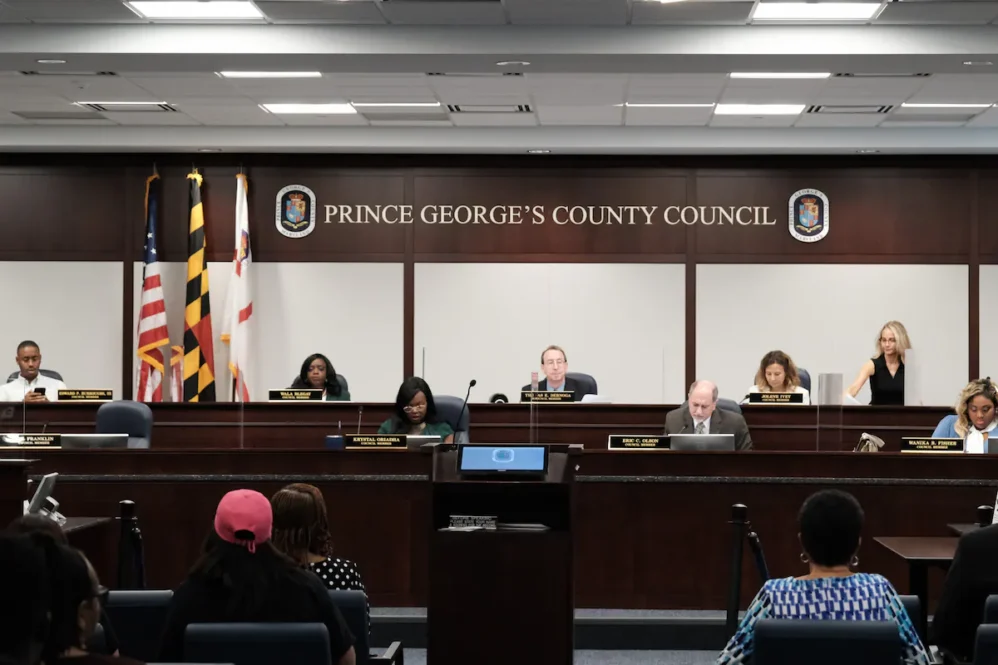WASHINGTON POST: The county isn’t alone in grappling with a confluence of challenges from the pandemic recovery, eroding federal aid and increased expenses. The Prince George’s County Council is being advised to cut spending and safeguard reserves to help curb escalating budget shortfalls.
A county advisory committee is warning Prince George’s officials to cut spending and safeguard reserves in anticipation of escalating budget shortfalls it projects could balloon to $407 million within five fiscal years.
Increased costs and the rippling impacts of the coronavirus pandemic appear poised to strain the county’s finances for years to come, the Spending Affordability Committee wrote this month to County Executive Angela Alsobrooks (D) and County Council chair Jolene Ivey (D- District 5) in a letter alerting the leaders they should expect to face a $171 million hole for the budget year that begins July 1.
Prince George’s isn’t alone in grappling with a confluence of challenges from the pandemic recovery, eroding federal aid and increased expenses, public finance and governance experts said. The state also is facing a round of belt-tightening, as lawmakers’ ambitions collide with lackluster economic growth.
“Counties don’t have a lot of choice about what they spend on,” said Jocelyn Johnston, professor in the Department of Public Administration and Policy at American University. “In the case of Maryland, they’re being asked to spend as much or more with less from the state.”
The local share of spending on education associated with the state’s signature Blueprint for Education plan coupled with the strain of keeping a solid Stormwater Management Enterprise Fund balance have hit the county hard, officials said. It’s the council’s hope that the state could help slow down or delay the requirements, Ivey said in a statement. For now, county leaders say they are focused on looking for savings.
“We’ll work with the county executive as we go through the budget process to identify vacant, funded positions to leave vacant,” Ivey said. “It’s more satisfying to implement new programs but it’s necessary to be responsible and support existing, successful programs and make sure we protect our triple-A bond rating.”
Allyson Wilson, communications director for Alsobrooks, who is running for U.S. Senate, declined to outline specific cuts under consideration but said a range of options are being examined. Alsobrooks and other county leaders have said they do not intend to raise constituents’ taxes to make up the difference.
Prince George’s County already has one of the highest rates allowed for local income tax and property tax, said Juan Pablo Martínez, assistant professor at the School of Public Policy at the University of Maryland College Park. “There really isn’t too much space to add more,” he said.
County leaders have long relied too heavily on property taxes to make ends meet as they struggled to lure the kind of commercial development that could ease the burden on residents.Alsobrooks has worked to grow the county’s transportation and amenities since her election as county executive in 2018, championing projects such as the Blue Line Corridor, transit-oriented developments and the new site for the FBI headquarters.
“As those projects come to fruition, they will continue to bring the jobs, amenities, resources and revenue that will allow us to make further investments in key areas such as health care, public safety, the environment and education,” Wilson said.










